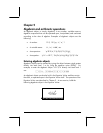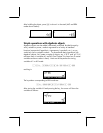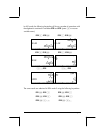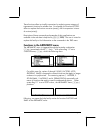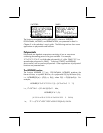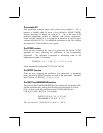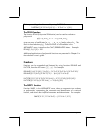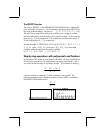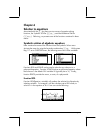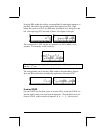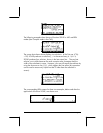
Page 5-9
The variable VX
Most polynomial examples above were written using variable X. This is
because a variable called VX exists in the calculator’s {HOME CASDIR}
directory that takes, by default, the value of ‘X’. This is the name of the
preferred independent variable for algebraic and calculus applications.
Avoid using the variable VX in your programs or equations, so as to not get it
confused with the CAS’ VX. For additional information on the CAS variable
see Appendix C in the calculator’s user’s guide.
The PCOEF function
Given an array containing the roots of a polynomial, the function PCOEF
generates an array containing the coefficients of the corresponding
polynomial. The coefficients correspond to decreasing order of the
independent variable. For example:
PCOEF([-2, –1, 0 ,1, 1, 2]) = [1. –1. –5. 5. 4. –4. 0.],
which represents the polynomial X
6
-X
5
-5X
4
+5X
3
+4X
2
-4X.
The PROOT function
Given an array containing the coefficients of a polynomial, in decreasing
order, the function PROOT provides the roots of the polynomial. Example,
from X
2
+5X+6 =0, PROOT([1, –5, 6]) = [2. 3.].
The QUOT and REMAINDER functions
The functions QUOT and REMAINDER provide, respectively, the quotient Q(X)
and the remainder R(X), resulting from dividing two polynomials, P
1
(X) and
P
2
(X). In other words, they provide the values of Q(X) and R(X) from
P
1
(X)/P
2
(X) = Q(X) + R(X)/P
2
(X). For example,
QUOT(‘X^3-2*X+2’, ‘X-1’) = ‘X^2+X-1’
REMAINDER(‘X^3-2*X+2’, ‘X-1’) = 1.
Thus, we can write: (X
3
-2X+2)/(X-1) = X
2
+X-1 + 1/(X-1).



